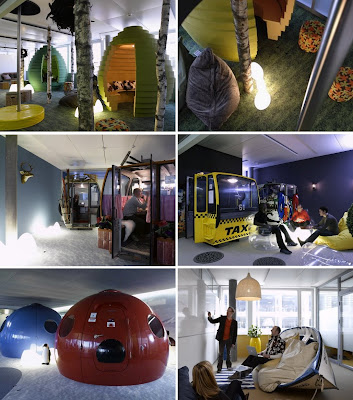
Don’t just benchmark Google for its technology – it also has one of the best corporate cultures in the world. (source)
Yesterday morning, I had an interesting conversation with my wife (an organisational excellence whiz) on the question of benchmarking and best practices.
First, we spoke about how global liveability indicators like this (from Mercer), this (from the Economist), this (from Monocle), and this latest one (conceived in Singapore), are used as top-line outcome measures in the Balanced Score Card – a universally accepted system for strategic management. Such measures provide objective assessments of a city’s efforts to position itself as a beacon of success.
For companies, non-profits and governments, business excellence scores tabulated by accolades such as the Malcolm Baldrige Award, European Foundation for Quality Management or EFQM Award, and the Singapore Quality Award may provide similarly useful yardsticks of organisational performance.
While such standards are useful as milestones of aspiration, what’s perhaps more critical is how one can learn from the individual processes, policies and practices embraced by leading organisations rather than to follow all of them. These individual steps are where the rubber meets the road.
Similarly, in determining suitable best practices for one to emulate or exceed, we should not only look within the industry but explore organisations outside the trade. Benchmarks should then be set against the companies, businesses and agencies which excel in specific arenas of competence.
Let me give you some examples to ponder.
Healthcare organisations like hospitals could look towards hotels in determining how best to turnover their patient’s beds, handle bed/ward placements, and to treat their patients humanely. Many hospitals have in fact outsourced much of their back-of-the-house functions like housekeeping, F&B, and laundry services to professional services firms. Their focus then is on providing optimal patient care and in treating health maladies.
Manufacturing companies churning out anything from widgets (the real ones) to toys to computers can look towards leaders in innovation like Apple, General Electric, and Coca-Cola. These firms are renowned for putting a relentless emphasis on continuous product or process improvement.
Here of course, one must pick and choose specific companies for specific areas of excellence. Some are masters at product design and developing consumer hype (like Apple), while others are perhaps better at logistics, distribution and inventory management (Coca-Cola).
Advisory firms and agencies peddling their expertise (rather than their brawn) may wish to examine how consultants from other lines handle knowledge management. A web design or advertising firm could follow the example of management consultancies like Bain and McKinsey in publishing thought leading papers online or offline. Similarly, business consultants may want to follow how leading advertising agencies conduct their ideation and brainstorming processes.
Finally, in the business of museums and art galleries where I’m in, one could look at world-class experience-rich attractions like the Disneyland or Universal Studios theme parks for ideas on visitor engagement. Processes such as the management of crowds, training of frontline staff (as cast members), ticketing, merchandising, and marketing may be useful to emulate.
